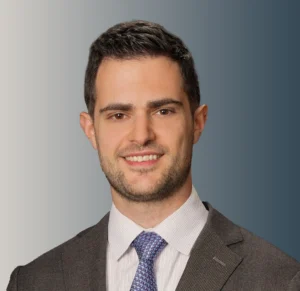Golfer’s elbow, also known as medial epicondylitis, is a common condition characterized by pain and inflammation on the inner side of the elbow. Despite its name, this condition is not exclusive to golfers (it is just a lot easier to pronounce that way!); it affects a wide range of individuals. In this post, we’ll take a closer look at golfer’s elbow, exploring its underlying causes, recognizing its symptoms, and outlining treatment strategies that can help patients regain function and return to their daily activities without discomfort.
Key Takeaways
- Golfer’s elbow is often caused by overuse and repetitive stress on the forearm muscles and tendons, leading to microscopic tears.
- Treatment options include conservative methods (rest, ice, medications, physical therapy), with surgery reserved for severe cases.
- Prevention strategies include strengthening forearm muscles, proper technique in sports/activities, appropriate equipment, and adequate rest.
What is Golfer’s Elbow?
Golfer’s elbow, or medial epicondylitis, is a form of tendinopathy that involves the tendons originating from the medial epicondyle of the humerus, the bony prominence on the inside of the elbow. These tendons are primarily responsible for flexing the wrist and fingers, as well as pronating the forearm (turning the palm downwards). When these muscles and their tendons are subjected to excessive or repetitive stress, microscopic tears can develop, leading to pain, inflammation, and degeneration of the tendon tissue.

While the name suggests a direct link to golf, it is important to understand that many activities can contribute to the development of this condition. The common thread among these activities is the repetitive use of the wrist and forearm muscles, particularly those involved in gripping, swinging, or throwing motions.
Causes of Golfer’s Elbow
The primary cause of golfer’s elbow is overuse and repetitive stress on the forearm muscles and their tendons. This repetitive strain can lead to microtrauma and degenerative changes within the tendon tissue. In the following subsections, we’ll take a closer look at the potential causes of golfer’s elbow.
Repetitive Wrist and Finger Motions
Activities that involve repeated forceful wrist flexion and finger clenching are frequent contributors. This may include sports such as golf and baseball. Occupational activities that require repetitive hand, wrist, and forearm movements may also increase the risk of developing golfer’s elbow.
Improper Technique and Biomechanics
Poor form during sports or occupational tasks is a risk factor. When movements are not executed correctly, certain muscles and tendons bear an undue amount of stress. For instance, in golf, an incorrect swing can cause the wrist flexors to overcompensate. Similarly, in weightlifting, curling the wrists during bicep curls may overload the elbow tendons.
Insufficient Warm-up and Conditioning
Starting intense physical activity without adequate warm-up can leave muscles and tendons unprepared for the demands placed upon them, increasing the risk of injury. Furthermore, weak forearm muscles may be less capable of absorbing the energy from sudden physical stresses, making them more susceptible to damage.
Equipment Issues
Using ill-fitting or inappropriate equipment may increase the risk of golfer’s elbow. For example, golf clubs that are too heavy or have grips that are too small can lead to increased strain. Similarly, a tennis racket that is too heavy or too tightly strung can transmit excessive forces to the elbow.
Acute Trauma
While less common than overuse, a direct blow to the elbow or a sudden, forceful movement can also cause acute damage to the medial epicondyle tendons, leading to symptoms of golfer’s elbow.
Symptoms of Golfer’s Elbow
The symptoms of golfer’s elbow typically develop gradually, though they can sometimes appear suddenly after an acute injury. The severity can range from mild discomfort to debilitating pain. Common symptoms include the following:
- Pain and Tenderness: The hallmark symptom is pain and tenderness on the inner side of the elbow, specifically around the medial epicondyle (the bump on the inside part of your elbow). This pain may radiate down the forearm towards the wrist and fingers.
- Pain with Movement: The pain often worsens with certain movements, such as swinging a golf club, shaking hands, turning a doorknob, or lifting objects.
- Stiffness: The elbow joint may feel stiff, particularly in the morning, and making a fist can be painful.
- Weakness: Patients may experience weakness in the hands and wrists, affecting grip strength.
- Numbness or Tingling: In some cases, numbness or tingling sensations may radiate into one or more fingers, typically the ring and little fingers. This can indicate irritation of the ulnar nerve (the funny bone nerve), which passes close to the medial epicondyle.
Golfer’s elbow usually affects the dominant arm, but it can occur in either arm or both.
Diagnosis
Diagnosing golfer’s elbow typically involves a thorough physical examination and a review of your medical history and symptoms. During the physical exam, your doctor may press on the elbow to identify tenderness and assess the range of motion.
In many cases, imaging tests are not necessary to diagnose golfer’s elbow. However, X-rays may be ordered to rule out other conditions, such as fractures or arthritis. If the diagnosis is unclear, or if nonoperative treatment is not working, magnetic resonance imaging (MRI) or ultrasound imaging may be used to assess the extent of tendon damage.
Treatment Options for Golfer’s Elbow
Treatment for golfer’s elbow typically begins with conservative, non-surgical approaches. The primary goal is to reduce pain and inflammation, promote healing, and restore normal function. Surgical intervention is rarely required and is usually considered only after extensive conservative treatment has failed to provide adequate relief. An experienced elbow specialist can evaluate the condition and help guide which treatments may be appropriate for you.
Conservative Treatments
- Rest and Activity Modification: This involves avoiding or significantly reducing activities that aggravate the elbow pain. This does not necessarily mean complete immobilization but rather modifying movements to reduce stress on the affected tendons. For occupational activities, ergonomic adjustments or frequent breaks can be beneficial.
- Ice Application: Applying ice packs to the affected area for 15-20 minutes several times a day may help reduce pain and inflammation.
- Nonsteroidal Anti-Inflammatory Drugs (NSAIDs): Over-the-counter NSAIDs may help manage pain and reduce inflammation.
- Physical Therapy and Exercises: A structured physical therapy program is often a key part of recovery. This typically includes stretching and strengthening exercises to build flexibility and endurance.
- Bracing: Wearing a brace or an elbow strap may help reduce tension on the affected tendons by distributing the forces more evenly across the forearm muscles. It is important to wear this BELOW the area of pain, not directly on the medial epicondyle.
- Corticosteroid Injections: A corticosteroid injection directly into the affected area may provide temporary pain relief, although there are downsides to steroid injections (may weaken tendons and make them more likely to tear).
- Platelet-Rich Plasma (PRP) Therapy: PRP is a regenerative treatment that involves injecting a concentrated solution of the patient’s own platelets into the injured tendon.
Surgical Treatment
Surgery for golfer’s elbow may be considered when conservative treatments have failed to provide relief. The surgical procedure may involve removing the damaged, degenerative tissue from the medial epicondyle and reattaching healthy tendon tissue to the bone. This can often be performed through a small incision on the inside part of your elbow.
Prevention of Golfer’s Elbow
Reducing the risk of golfer’s elbow starts with addressing the root causes of overuse and repetitive stress. Regularly strengthening the forearm muscles through certain exercises can help the muscles better absorb sudden physical stresses. Stretching the wrist flexors and extensors before repetitive activities, along with a proper warm-up that includes light cardio, can further prepare the muscles for use.
Improving technique is also a preventive strategy. Athletes can work with a coach or instructor to refine their form in activities like golf, tennis, or baseball, while individuals in occupational settings can focus on proper body mechanics and ergonomic adjustments. Using the right equipment is equally important. Making sure that golf clubs, tennis rackets, or similar gear are properly fitted and appropriate for one’s body and skill level can help reduce strain on the elbow.
Incorporating regular breaks during repetitive activity allows the forearm muscles time to rest and recover. If any discomfort or pain develops, it’s often best to pause and give the elbow a chance to heal.
Summary
Golfer’s elbow is a prevalent condition that may stem from the overuse and repetitive stress placed on the forearm muscles and tendons that attach to the inner elbow. While commonly associated with golf, its reach extends to various sports, occupational tasks, and hobbies involving forceful wrist and finger movements. Treatment typically begins with conservative measures such as rest, ice, NSAIDs, and a comprehensive physical therapy program focused on stretching and strengthening. Surgical intervention may be recommended if non-surgical treatments fail to provide relief.
Frequently Asked Questions
Is golfer’s elbow the same as tennis elbow?
No, while both are forms of epicondylitis, they affect different parts of the elbow. Golfer’s elbow (medial epicondylitis) causes pain on the inner side of the elbow, affecting the tendons that flex the wrist and fingers. Tennis elbow (lateral epicondylitis) causes pain on the outer side of the elbow, affecting the tendons that extend the wrist and fingers.
How long does it take to recover from golfer’s elbow?
The recovery time for golfer’s elbow varies depending on the severity of the condition and adherence to treatment. Mild cases may resolve within a few weeks with rest and activity modification. More severe or chronic cases can take several months, or even up to a year, to fully recover.
When should I see a doctor for golfer’s elbow?
Consider consulting a doctor if your elbow pain and tenderness do not improve with rest, ice, and over-the-counter pain relievers within a few days, or if function is severely impacted.



